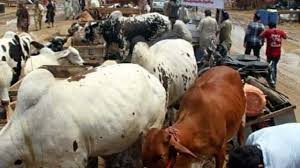The Food and Agriculture Organisation (FAO) Food Price Index for the month of August remained stable in August, despite the sharp rise in the price of wheat.
Also, cereal prices rebounded while vegetable oils and sugar declined.
The monthly index, released at the weekend averaged 167.6 points in August, virtually unchanged from its revised estimate for July and 5.4 percent below its level in August 2017.
The FAO Cereal Price Index rose 4.0 percent during the month, with wheat prices raising twice as much due to deteriorating crop prospects in the European Union and the Russian Federation.
International maize quotations rose by more than 3.0 percent while rice prices eased during the month.
The FAO Vegetable Oil Index declined 2.6 percent from July, nearing a three-year low as palm, soy and sunflower oil quotations all fell amid favorable production trends and, in the case of palm oil, weak global import demand.
The FAO Dairy Price Index declined for the third consecutive monthly falling 1.5 percent amid relatively thin seasonal volumes.
While there are fears that drought may adversely affect milk production growth in parts of Europe and Australia, with New Zealand’s output prospects improving.
The FAO Sugar Price Index dropped 5.4 percent from July to reach the lowest level in a decade, due largely to the continued depreciations of the currencies of major exporters Brazil and India.
The FAO Meat Price Index was broadly unchanged for the month, as pig meat and ovine meat quotations rose on strong import interests from China, offsetting declining poultry and bovine meat prices, with the latter under pressure by high export availabilities from the US.
Meanwhile, FAO have forecasts global cereal production in 2018 to reach 2.587 million tonnes, indicating a small upward revision from July but a three-year low and 2.4 percent below last year’s record high level.
The latest Cereal Supply and Demand Brief, showed a 14 million tonnes in global wheat production forecast for this year, which now stands at almost 722 million tonnes, the smallest since 2013.
Dry and hot weather intensified yield reductions around Europe.
On the other hand, worldwide production of coarse grains was revised upward by 15 million tonnes since July, with improved outlooks for maize in China, Ukraine and the US, more than offsetting expected output reductions in the European Union and the Russian Federation.
FAO now expects 2018 coarse grain output to be nearly 1.354 million tonnes, about 2.6 percent below the 2017 levels.
According to the report, global rice production is expected to rise 1.3 percent from 2017 and reached a new record of almost 512 million tonnes in 2018, buoyed by larger output recoveries in Bangladesh and Vietnam and stronger area rebounds in Sri Lanka and the United States.
The UN agency raised its forecast for world cereal utilization to 2.648 million tonnes, largely due to greater use of maize for feed and industrial use and the robust rice harvest.
Cereal stocks are also being reduced – especially in China, the European Union and the Russian Federation, and the global cereal stock-to-use rat
Blueprint gives you the latest Nigerian news in one place. Read the news behind the news on burning National issues, Kannywood, Videos and the Military



